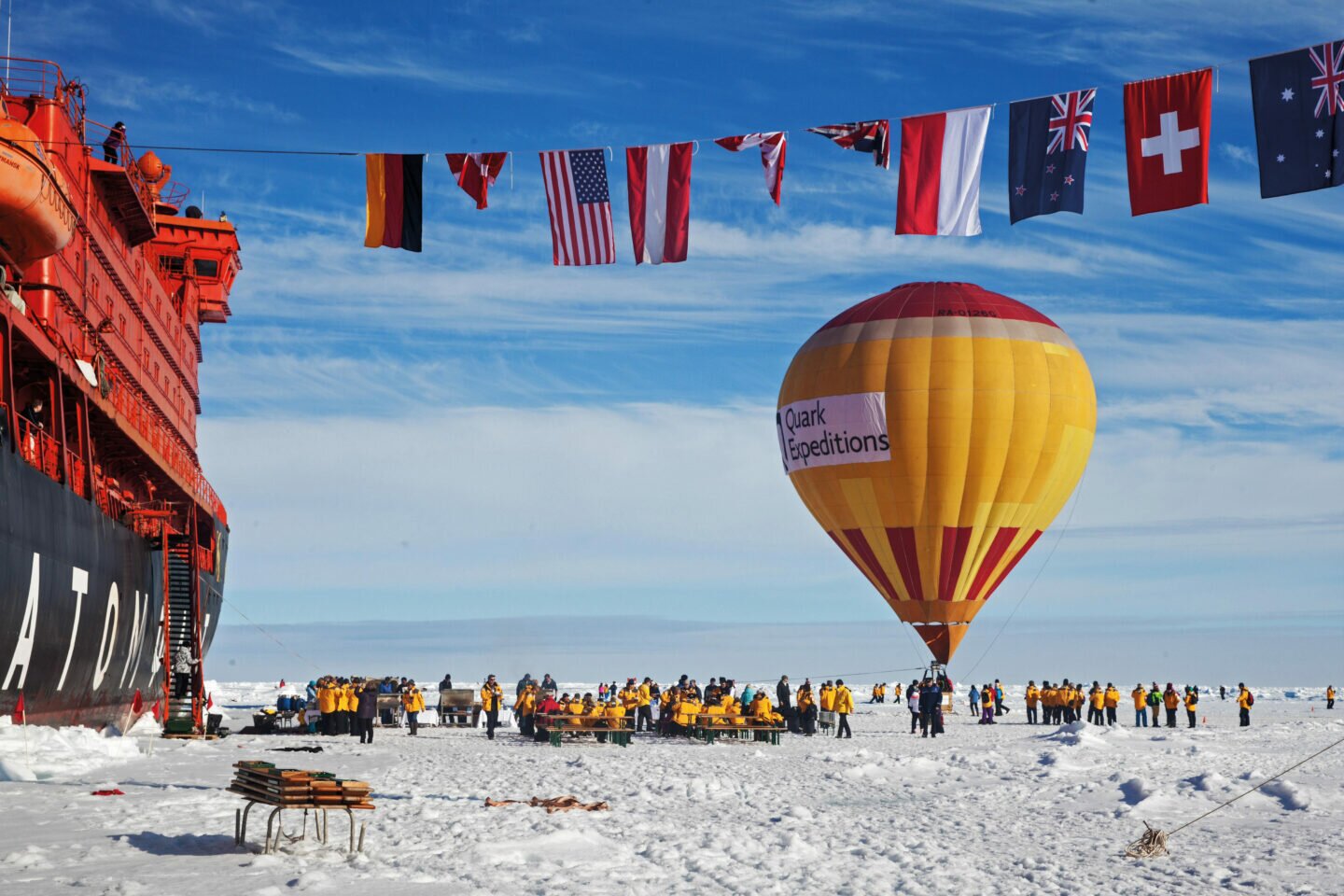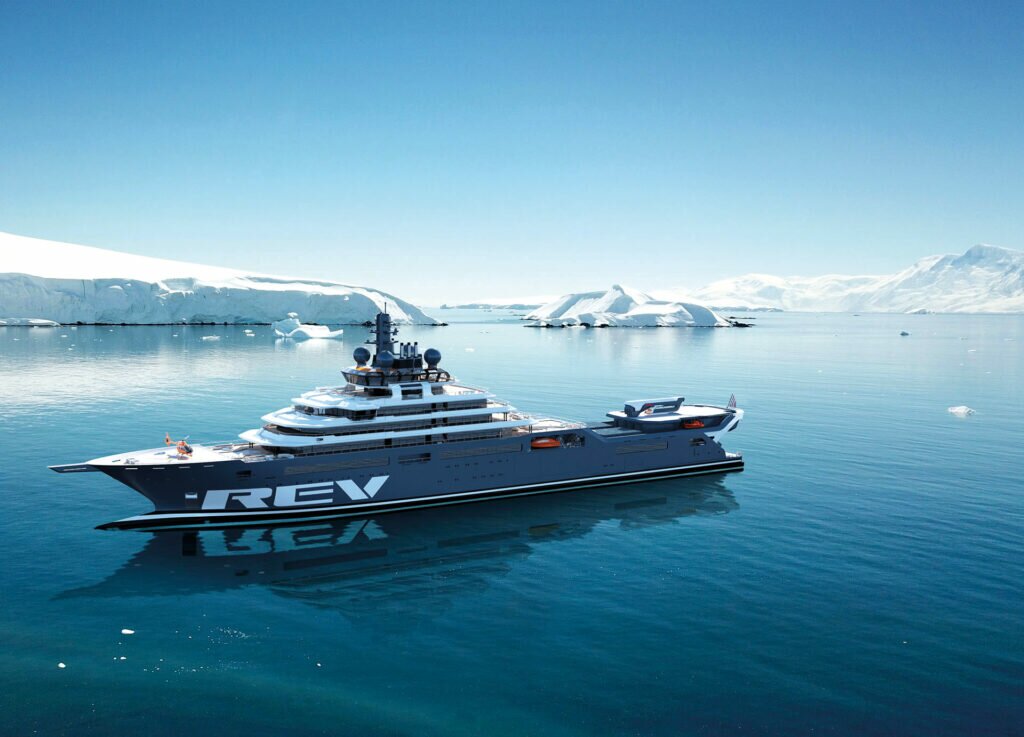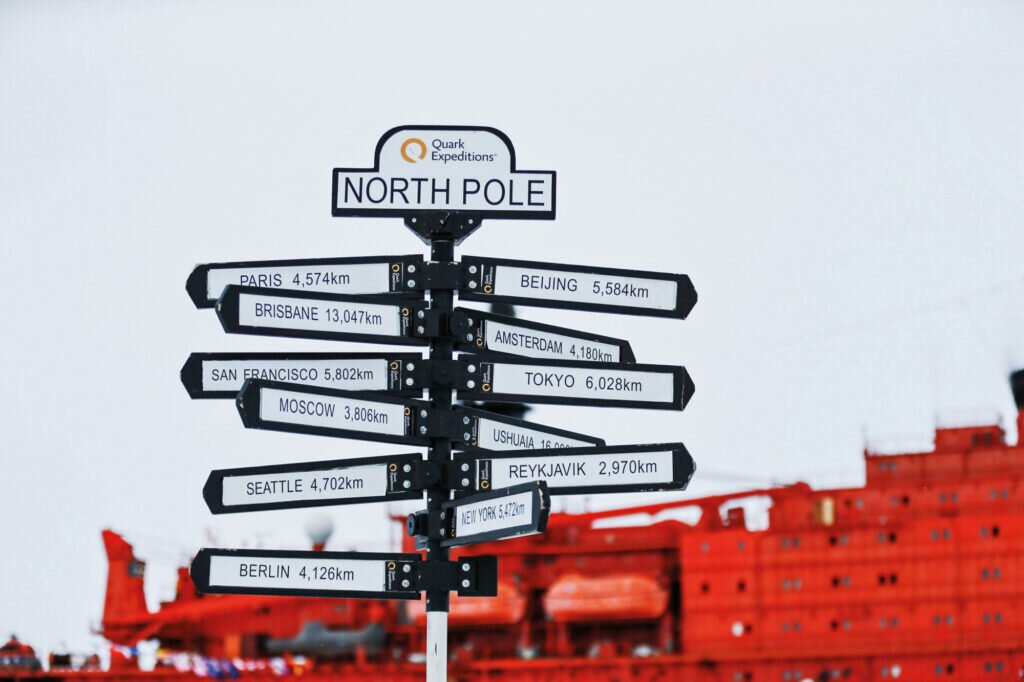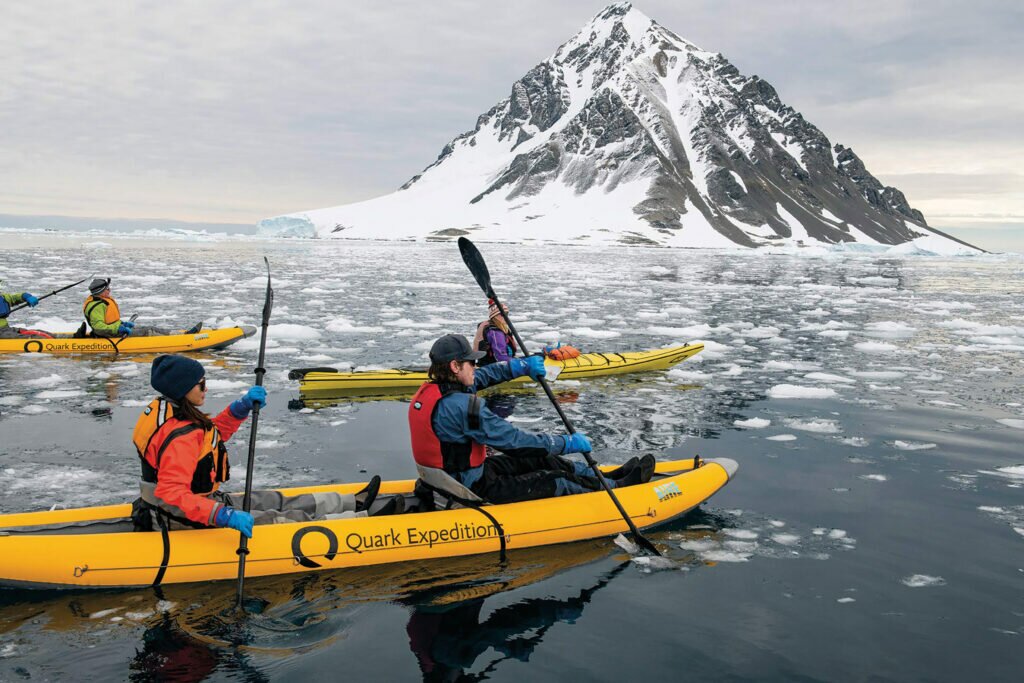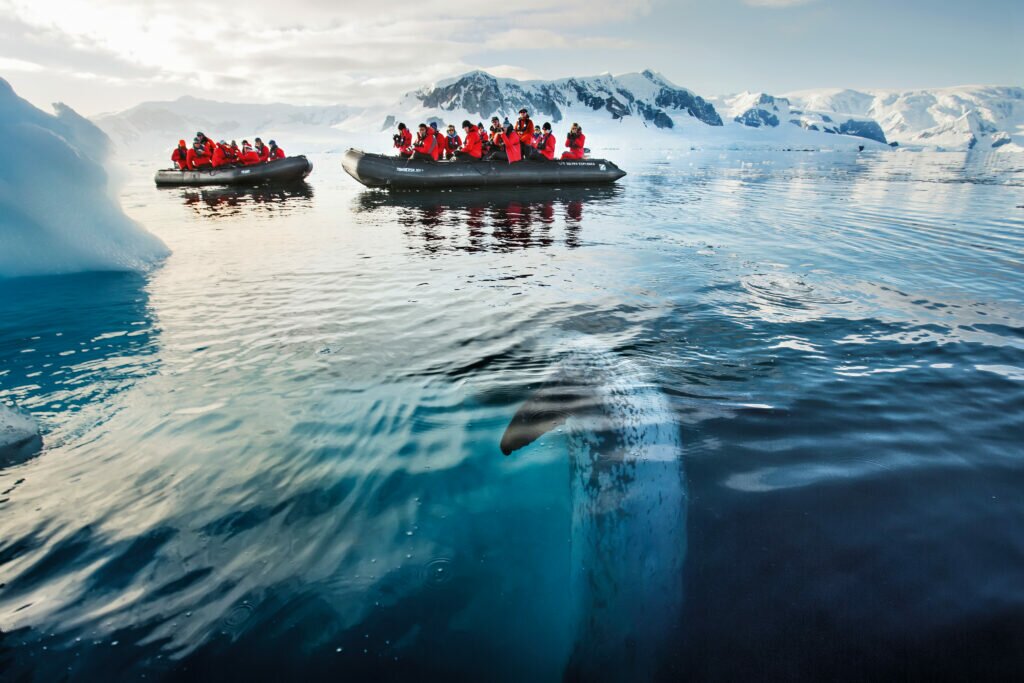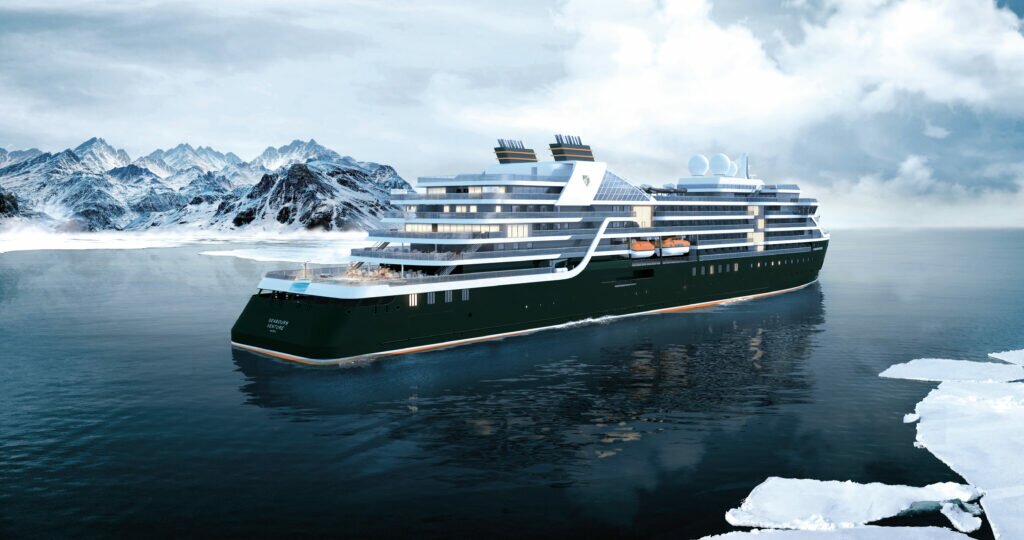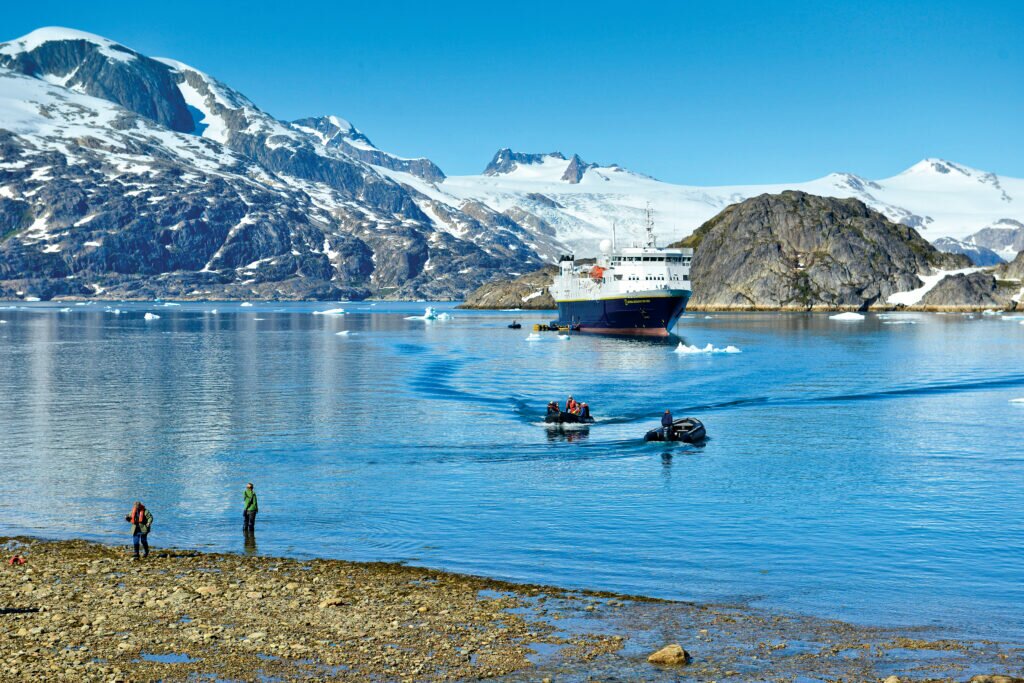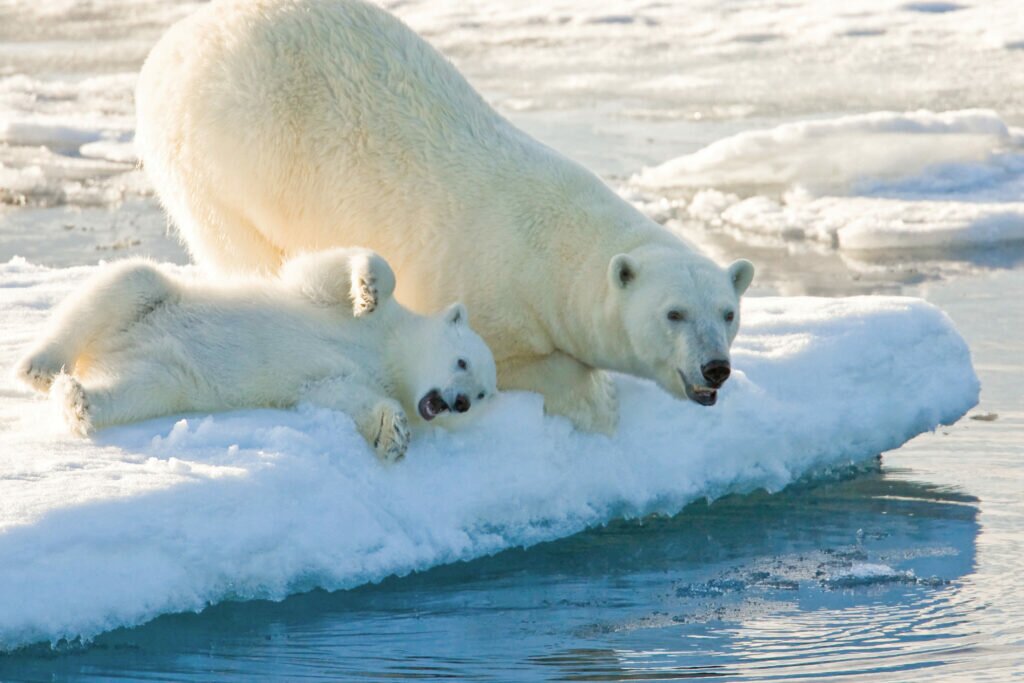Cruising has long been a popular way to get from point A to point B. But as travellers focus more on the environmental impacts of travel and seek out adventurous experiences that connect them more deeply with the landscapes they’re exploring, there’s been a shift away from sunny, languorous days spent by the poolside with cocktail in hand towards all-weather, nature-focused cruising aboard smaller, low-impact yachts with an educational and, often, scientific focus.
The appeal of so-called expedition cruising has only grown in these pandemic-driven times, with more opting for small private travel groups or pod-centric experiences. And there’s no need to rough it out, unless you want to. Increasingly, luxe cruise companies are offering a new category of expedition itineraries, which can be fully customisable for private charters aboard vessels boasting gourmet restaurants, spas and plush accommodation.
There’s also been an uptick in luxury yachts built solely with expedition and scientific sailings in mind.
Image: Rev Ocean
When launched in late 2022 or 2023, the 183 metre–long Rev Ocean will be the largest superyacht sailing the world’s oceans.
The yacht and The Ocean Foundation share a single overarching mission: to make the world’s oceans healthy again through multidisciplinary initiatives to remedy plastic pollution, climate change and ocean acidification, and the environmental impacts of fishing and overfishing.
With capacity for 35 crew and 55 scientists, the purpose-built superyacht will operate in partnership with the United Nations Environment Programme and WWF Norway, among other organisations, and be made available for research and expedition sailings, with priority given to young, unknown scientists.
For up to four months a year, it’ll also be available for private charters that promote responsible environmental interactions and yachting with a purpose, where up to 28 guests can join world-leading ocean researchers, innovators, educators and guides on bespoke, long-distance cruises.
Rev Ocean was founded in 2017 by Norwegian billionaire Kjell Inge Røkke shortly after he signed The Giving Pledge, an initiative started by Bill and Melinda Gates and Warren Buffet through which the world’s wealthiest commit the majority of their fortune to giving back.
As part of Røkke’s commitment to fund “local” community, higher education and the environment, with a special focus on the oceans, Aker and the Rev Ocean organisation will also build a landmark, lighthouse-inspired building The Big Blue in Oslo to house World Ocean Headquarters. The hub will gather governments, the private sector, academia and civil society to protect and restore the health of the ocean and ensure its resources are used sustainably.
Activities aboard Rev Ocean will adhere to specific criteria, including low profile operations with an emphasis on windand electric-powered operations.
Details of onboard accommodation and public spaces are currently scant, but the ship’s sampling, observation, mapping and communication equipment are well documented. Charters can undertake exploration into any aspect of the entire marine ecosystem, from the coastal zone to abyssal depths and polar regions to the tropics, making use of Rev Ocean’s six multifunctional science laboratories, Airbus ACH145 helicopter, remote-operated vehicle control room and the ship’s eco-harvesting system for live catch and release sampling of ocean life along the way.
Although Rev Ocean’s maiden voyage has not been confirmed and itineraries are still in development, science director Alex Rogers says charterers in general have been asking for hard-to-reach places.
“The polar regions are in high demand, as well as the remote Pacific islands,” he says, adding that the use of the Triton 7500/3 submarine, the world’s deepest diving three-person acrylic-hulled submersible, is also frequently requested.
Rev Ocean is not the only luxury- and science-focused charter cruise in the market.
Quark Expeditions’ purpose-built, 199-passenger adventure-focused vessel Ultramarine launched last year, featuring expansive suites, soaring public and dining spaces and an expansive sauna with views of surrounding landscapes. Besides camping overnight at Tasermiut Fjord and foraging for dinner with a guest chef in southern Greenland, it also offers two twin-engine helicopters for flightseeing tours, heli-hiking, heli-landing on the Greenland Ice Sheet and alpine kayaking.
“We’ll fly you and your kayak into the mountains of South Greenland and take you kayaking, where few, if any, have ever paddled,” says Andrew White, president of Quark Expeditions.
Quark has a long history of pioneering polar explorations. Co-founders Lars Wikander and Mike McDowell took the first group of leisure travellers to the North Pole in 1991, marking the first-ever tourism transit of the Northeast Passage. It was also the first to offer hot-air ballooning in the North Pole. In December, it’ll offer guests the opportunity to observe the total solar eclipse in Antarctica, revisiting a similar voyage the outfit undertook in 2003 with a group of scientists, polar experts and passengers.
“Nasa scientists will be among the onboard experts who’ll educate guests so they get the most of this rare solar eclipse opportunity,” says White, noting that scientists, including penguinologists, biologists and glaciologists, join them on every voyage.
A growing interest in frontier destinations that were previously the domain of only the hardiest explorers has prompted luxury cruise companies to commission more expedition vessels.
Freddy Muller, vice president of charter and incentive sales at Silversea, says that while science-focused expeditions are a new market for the company, this is a sector it will continue to pursue. Silversea’s fleet of ships — which range from 50 to 304 allinclusive suites with dedicated butler service — are available for charter. The company also offers tailored itineraries and expedition activities, with the option of handpicking your expedition team.
“Our onboard learning can be customised to include enrichment activities with experts who are some of the highest in calibre within their respective fields,” says Muller.
You might depart Zanzibar to cruise Africa and the Indian Ocean, embarking on zoologist-led safaris to see the Big Five, tours of Jordan with leading archaeologists where you marvel at Petra’s rose-hued walls, or explore deserted Soviet outposts amid stacked mountains and volcanos in the remote Russian Far East with geologists.
Similarly, Ponant’s motor and sailing yachts are available for exclusive charter; this is alongside the company’s all-inclusive polar and tropical expedition cruises, which “take the art of French living” to some of the world’s most remote and inhospitable climes, including Antarctica, Papua New Guinea and remote Svalbard, where temperatures easily dip to -30°C in winter.
Every ship has a spa on board, even massage cabins and a Turkish bath aboard its Sisterships and saunas on Explorers. Ponant’s new luxury vessel Le Commandant-Charcot — the first hybrid-electric polar exploration vessel powered by liquefied natural gas (LNG) — has an indoor swimming pool, indoor and outdoor restaurants and 135 neutral-toned staterooms and suites that evoke the experience of cruising on a private yacht.
In 2021 and 2022, Seabourn will take delivery of two ultra-luxury purpose-built expedition vessels, each built to PC6 Polar Class standards and carrying two submarines and 24 Zodiac landing crafts. Each ship will offer 132 all-veranda, all-ocean-front suites and an expert expedition crew of 26; guests can also sign up for optional activities that are planned and led by expert guides, including dogsledding beneath the Northern Lights or observing hunting polar bears (at a safe distance) via kayak.
Lindblad Expeditions has operated expedition journeys that highlight exploration, research, technology and conservation in partnership with National Geographic since 2004, although Karen Kuttner-Dimitry, Lindblad’s vice president of affinity and charter sales, says the company has seen stronger demand recently for private charters and small group experiences. Lindblad’s “bucket list” naturalist-led programmes to the Galapagos, Antarctica, the Arctic and Alaska are still its most popular. This year, the company is expanding its Wild Escapes collection of action-packed shorter voyages (five to 10 days) to Alaska, Iceland, Greenland and French Polynesia for charterers who want to experience more wildness, wellness and wonder in less time.
An alternative to chartering a cruise ship is to work with a company specialising in expedition yachts for charter. Established in 2019 by a team with more than 30 years’ of polar experience, Secret Atlas Charters offers a selection of 12-passenger yachts to explore Svalbard, Greenland, the Northwest Passage, Norway and Iceland, working with expedition captains and leaders who count Nasa/JPL and the US Navy among their clients.
Among the most upscale of the company’s 12-passenger yachts, MV Balto is a robust ex-Finnish-government icebreaker newly converted into an expedition yacht. It houses a sauna, master suite and fully en-suite accommodation for 12, along with a wood-panelled lounge and large decks.
Need people trained in polar bear protection? Secret Atlas has got you covered. Carrying a load of scientific gear? Not a problem. MV Balto has a 10-ton crane and large cargo storage, plus two Zodiac landing crafts for shore landings to visit walrus colonies and the scientific community of Ny-Alesund, the most northerly inhabited settlement on earth — both stops on its popular 15-day Svalbard Pioneer Cruise.
“The real luxury for us is that our vessels are built for expeditions in polar environments and have ice-strengthened hulls. Many other vessels cannot go into the sea ice. We can, which is all part of the experience,” says co-founder Andy Marsh.
